Of the living

Allan Kaprow, Tino Sehgal, Pierre Huyghe and Philippe Parreno…
In the late 1960s, Allan Kaprow (1927-2006), who was a leading figure in the New York avant-garde and a former student of John Cage at the Institute for Social Research, proposed a stimulating interpretation of Pollock’s legacy and action painting. Calling for an escape from art’s traditional boundaries, he sketched the outlines of a new framework of intervention, where the artistic gesture would flourish in complete freedom: the “environment”. This latter developed in the form of collages and assemblages of non-artistic materials, freed from the gallery wall to invade space. “Environments”, he wrote, “are generally quiet situations existing for one or for several persons to walk or crawl into, lie down or sit in. […] Other ‘Environments’ ask that the visitor-participant recreate and continue the work’s inherent processes.”1
Yard, which was made in 1961 in the courtyard of the Martha Jackson gallery in New York, represented the archetype of Kaprow’s project: visitors were encouraged to make their own way, come what may, through a space invaded by hundreds of old tyres, which they could handle and re-organize as they saw fit. Kaprow’s at times monumental environments introduced different sensory effects (light, sound and smell), and camouflaged space to disorient spectators. And it was indeed these onlookers’ bodies, and their capacity to move, feel and face given situations which here surged forth like Greenberg’s repression and became the yardstick for art practices in the decade to come, occupied as it was with exploring the limits of human perception—one thinks, in particular, of the series of corridors introduced by Bruce Nauman in 1969.
So the environment consisted in establishing the plastic conditions (a pile of old tyres, for example), capable of ushering in a set of interactions and patterns of behaviour liable to muddle art and life. It represented the ferment of an event taking place within it, described by the term “happening”, which has now been handed down to posterity. By overlapping the two sides (a context / an action) of one and the same coin, Kaprow favoured a dynamic approach laden with varying intensities tallying with a range of spatial, temporal and sensitive data. He gradually sought to install his environments/happenings in non-artistic contexts—at the sculptor George Segal’s chicken farm, for example—considering “the emergence of the picture shop and museum in the last two centuries as a direct consequence art’s separation from society”.2 Venues which are now obsolete for an art trying to connect separate things.
In 1976, Brian O’Doherty published a series of articles still famous for their analysis of the white cube and its aesthetic challenges. He shared Kaprow’s observations about a reactionary system—“Never was a space, designed to accomodate the prejudices and enhance the self-image of the upper middle classes, so efficiently codified”,3 he wrote—but he nevertheless saw in the assemblage practices associated with environments a reaffirmation of the gallery space: “space now is not just where things happen; things make space happen. […] If the picture plane defined the wall, collage begins to define the entire space.”4 Worse still, the hold exercised by the white cube was such that it was impossible to escape it. O’Doherty unveils the status of protagonist assumed by the hallowed space of the white cube following in the footsteps of Institutional Critique artists such as Michael Asher, Hans Haacke, and Daniel Buren, who simultaneously strove to decipher the art institutions’ codes from a phenomenological, spatial, and political viewpoint.
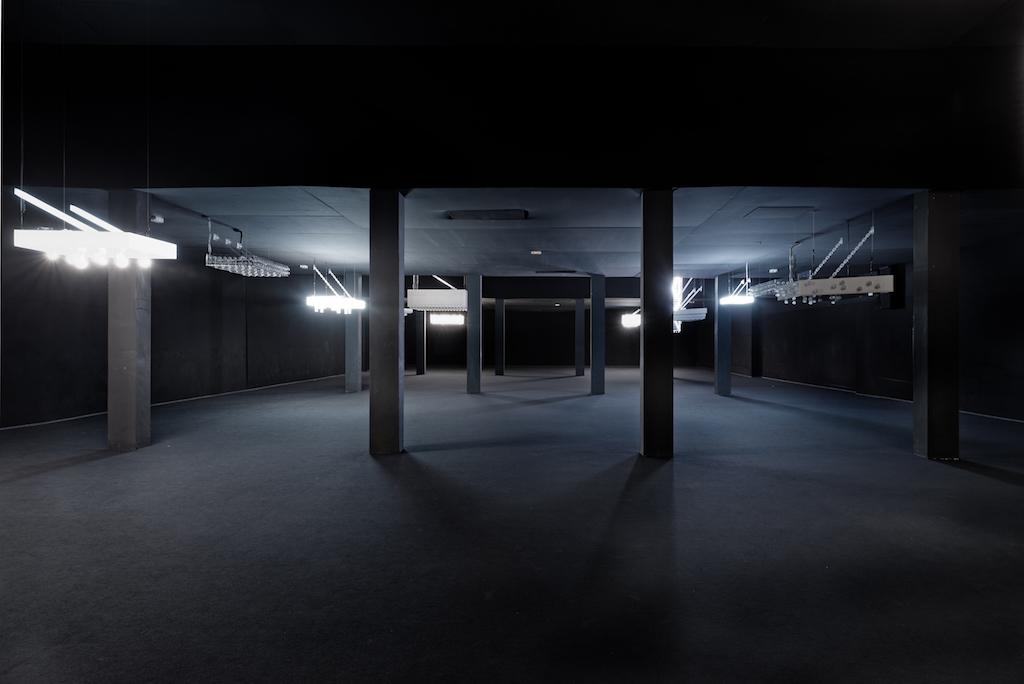
Philippe Parreno, « Anywhere, Anywhere, Out Of The World », Palais de Tokyo, Paris, 2013. Photo : Aurélien Mole. © Palais de Tokyo. Courtesy Air de Paris, Paris.
An ecology of exhibitions
The interest of artists—or some of them in any event—has gradually shifted from the white cube as an ideological space to the issue of the exhibition. As we know, the 1990s were the theatre of intense thinking about exhibitions’ formats, the ways they appeared, and their boundaries, imagining them turn by turn in the guise of books, films, and parties, re-using them through fiction, describing their multi-faceted and all-encompassing installations as landscape, and seeking to produce, within the institution, social linkage or, according to Nicolas Bourriaud who cast these practices in the melting pot of relational aesthetics, “hands-on utopias”.5
Rather than going back over that period in detail, let us focus on one or two recent proposals made by some of those people involved who, since that time, have been pushing the lines of thinking embarked upon to a particularly accomplished stage. They also echo Kaprow’s “environmental” concerns. If it belongs to a clearly defined era and praxis which does not need to be literally transposed into our present day, the notion forged by the New York artist seems interesting to put in perspective with a way of thinking dealing with an ecology of exhibition, which questions its own conditions of existence, and keeps an eye on developing them. It would in fact seem that the art/life dialectic is being re-enacted here on a totally different level, with this latter now proceeding by way of exploring possibilities of lending substance to an exhibition, enlivening it, and even turning it into an autonomous organism endowed with movements and subject to a set of variations. The dream of a merger between art and life is being replaced by the no less ambitious dream of a living exhibition.
Crowd movement
Today, the “living” factor seems to be ubiquitous in art discourse, encompassing different accepted meanings. The first refers to the “living” element of the living spectacle, with which art is in perpetual (re-)negotiation, and which involves taking into account the human body, its possibilities of action, and a joint physical presence between the performer(s) and the audience. It thus refers to a live experience defined by a variable time-frame, generally resulting from the event, and is rooted in the history of performance and its complex ramifications with theatre, music, and dance.
We have seen an increase in the number of festivals and spin-off programmes making the voice and the word, the acoustic live performance and choreographic movement the favoured vehicles of ephemeral works, moving the cursor of materiality towards physicality. A certain number of artists and curators have explored the possibility of extending these representations to the time scale of the exhibition—which obviously raises a certain number of problems in terms of human, logistical, and budgetary wherewithal. In this sense, dance has been a particularly intense experimental area, as is illustrated by “A Choreographed Exhibition” organized by Mathieu Copeland in 2008 at La Ferme du Buisson6 where, for a month and a half, during the art centre’s opening hours, a group of five dancers performed pieces by Jennifer Lacey, Roman Ondak and Michael Parsons, filling the space like living sculptures.
Let us also mention “Work/Travail/Arbeid” conceived at the Wiels contemporary art centre in Brussels in 2015 by Anne Teresa de Keersmaeker as the adaptation of her dance Vortex Temporum to the space-time frame of a nine-week exhibition.7 Because the venue was filled with movements, the spectator had to re-negotiate his place: either staying on the sidelines and unwittingly re-enacting the distancing of a scene here abolished, or drifting among the performers and endlessly repositioning himself in relation to their movements. The time of his visit was also potentially lengthened from a few minutes to several hours, based on his degree of absorption.
These phenomenological aspects crop up again in the carte blanche offered by the Palais de Tokyo at the end of this year 20168 to the artist and former dancer Tino Sehgal, who makes use of the art centre’s 13,000 sq. m. and involves some 300 participants. To describe his work, Sehgal prefers the term situation to performance and choreography. In the vocabulary of the Situationist International, situation is defined as a “moment of life, concretely and deliberately constructed by the collective organization of a unitary atmosphere and an interplay of events”.9 The “living” dimension of the exhibition, the drift which it invites us to, is clearly expressed through the flow of movements, words, and songs produced by the actors, but also and above all by those moments of exchanges which emerge in the course of a confidence or of the falsely naïve maieutic method of This Progress, which greets us at the entrance of the exhibition. “By re-inventing the ritual of the encounter with the work”,10 Sehgal strives to scramble the roles of everybody, with the spectator being, in his turn, prompted to expose himself (almost in the sense of an endangerment) and take an active part in the work.
For John Dewey, experience is not given as such, it involves the liaison and negotiation between one or more bodies, an environment, a situation, and a circumstance.11 Sehgal invites us to this type of experience in which everyone’s sensations and emotions come to the surface, and become part of an experienced present and, because no documentation has been made in accordance with the artist’s wishes, in the memory of the spectators. If it seems difficult to remain totally impassive in the face of Sehgal’s staged presentations (This Variation appears, in particular, to be a must-see work), what happens when a visitor refuses to play the game or answer questions, or when he takes the exchange along a track other than the one envisaged by the artist’s nevertheless open scenario?
Ghosts and robots
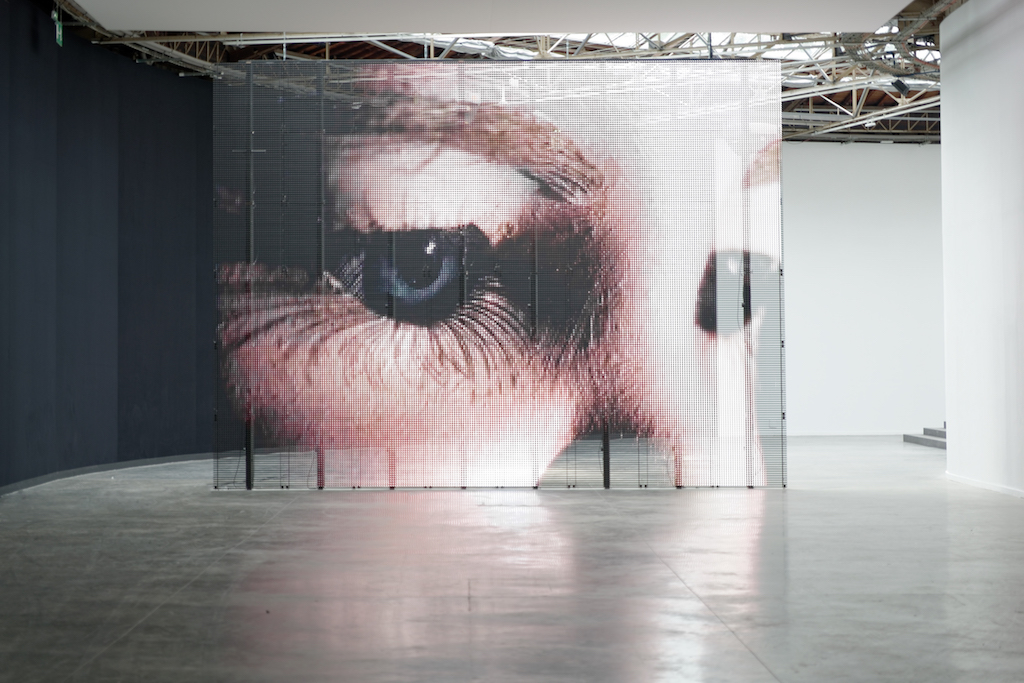
Philippe Parreno, « Anywhere, Anywhere, Out Of The World », Palais de Tokyo, Paris, 2013.
Photo : Aurélien Mole. © Palais de Tokyo. Courtesy Air de Paris, Paris.
Setting up a situation, and imagining the exhibition by way of script or score are strategies which have been widely explored by Pierre Huyghe and Philippe Parreno, both invited by Sehgal to the Palais de Tokyo. Sharing a number of references and reflections, they explore the format of the exhibition in a relation to time, like the way of making a form public, and getting it to appear and/or disappear. It is a matter of inhabiting or animating this empty shell—this organ-less body—represented by the exhibition, by incorporating in it the artifice of a movement, a technological prosthesis, or directly, of the “living”—in its broad meaning, this time including plants, animals and bacteria. In London and Paris, the two artists are currently presenting projects mixing complex programming and organic form, both calling upon the notion of auto-poiesis coined by the biologists Francisco Varela and Humberto Maturana, which describes a system (a biological cell, for example) of self-production, permanently interacting with its environment.
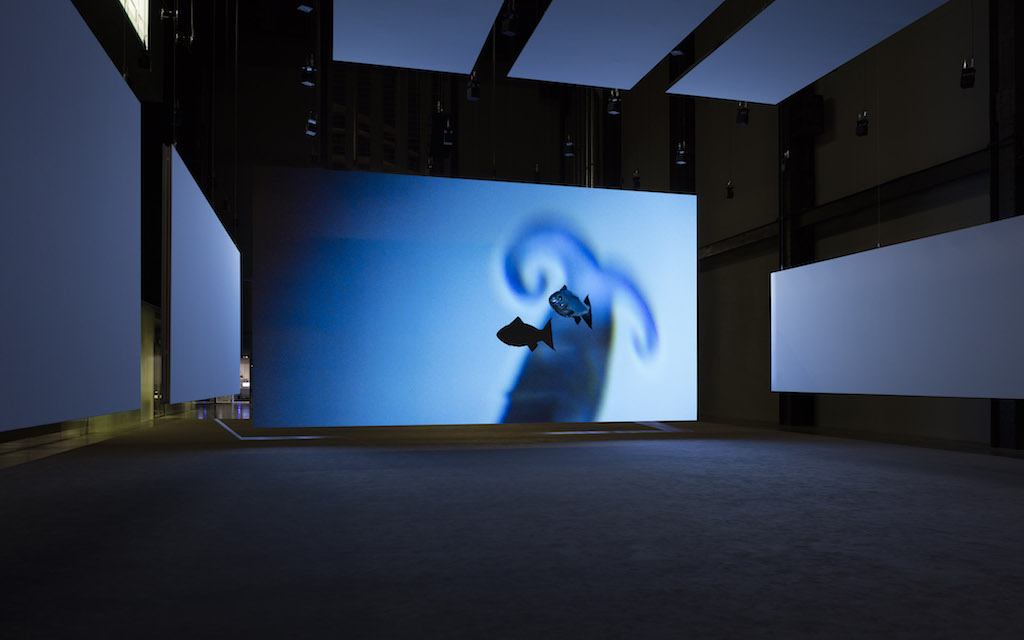
Philippe Parreno, Anywhen, Hyundai Commission 2016, Turbine Hall, Tate Modern, London. 10.2016 – 04.2017. Photo : Andrea Rossetti,
© Hyundai Commission 2016. Courtesy Air de Paris, Paris.
As an organizational structure, the machine has enjoyed a predominant place in Parreno’s work in recent years, gradually incarnating the many ghosts which fill his works and “orchestrate” his exhibitions, one such being the 2013 show at the Palais de Tokyo with its carte blanche, set to the beat of the movements of Stravinsky’s Petrouchka. As a master of illusion, he broaches the exhibition like a puppet to be handled, like a robot sequencing a set of actions which define a certain drama. For Anywhen, occupying Tate Modern’s imposing Turbine Hall, he proposes a mechanical ballet looking like a total artwork, incorporating sound, light, video and movement, in which screen, projector and moveable walls rise and fall as if endowed with their own life. By mixing and reshaping museum and theatre codes (and those of their wings, in particular), Parreno presents a moving body whose variable cadence is the result of a mixture of control and chance, computers and biology: the software steering the whole thing reacts to micro-organisms contained in a bioreactor placed in the exhibition. This latter thus comes to life through this configuration of non-human actors, which provides the functioning of impressive machinery, while at the same time introducing a set of potential accidents.
Insects and media
Back to Paris and Sehgal’s carte blanche, where, in the Palais de Tokyo’s basements, Pierre Huyghe proposes an intervention resembling an autonomous show, titled Living Cancer Variator, also based on this alliance between the living world and technology. The ambiance is more sombre and crepuscular than at the Tate, and will possibly also be more deceptive for the spectator. It nevertheless seems to us to be pushing the process-related software further. What precisely do we discover in it? A few flashing neons, leaks, a muddy pond, a broken bellows and a hoist which suddenly seems to come to life, the whole introducing an atmosphere worthy of the best scenes in Blade Runner or Alien. At first glance, the artist is re-enacting the recipes of an immersive environment, or calamitous fiction. But the challenge lies elsewhere, in such a way that it would be more fitting to talk of emersion than immersion: the procedure at work is aimed at bringing forth a set of interactions and getting them to emerge, interactions which physically affect their environment. Huyghe had already introduced into previous projects bees, spiders and dogs, all totally free. Here he grasps the activities of different living organisms (flies, mice, ants, spiders and bacteria) which make up the ecosystem of the Palais de Tokyo, with the help of movement, temperature and pH sensors scattered in the space of the venue. Added to all this are data of human origin: the recording of the heartbeats of the little girl playing Ann Lee in a nearby room and variations in CO2 and temperature of people participating in This Variation upstairs. The whole is transmitted to an incubator (hidden behind a wall, but visible) containing HeLa12 cancerous cells and varying the conditions of their development.13 An algorithm last of all translates these evolutions which act directly on the art centre’s hydraulic, thermic and electric circuits. The incubator and the algorithm work like the interface between the living and its environment (the exhibition space) and render a milieu perceptible which is crossed by a set of mediations and arrangements, which in turn develops and changes in an ongoing and contingent way, existing in itself, as with Parreno, incidentally, whether a visitor is there to attest to it or not.
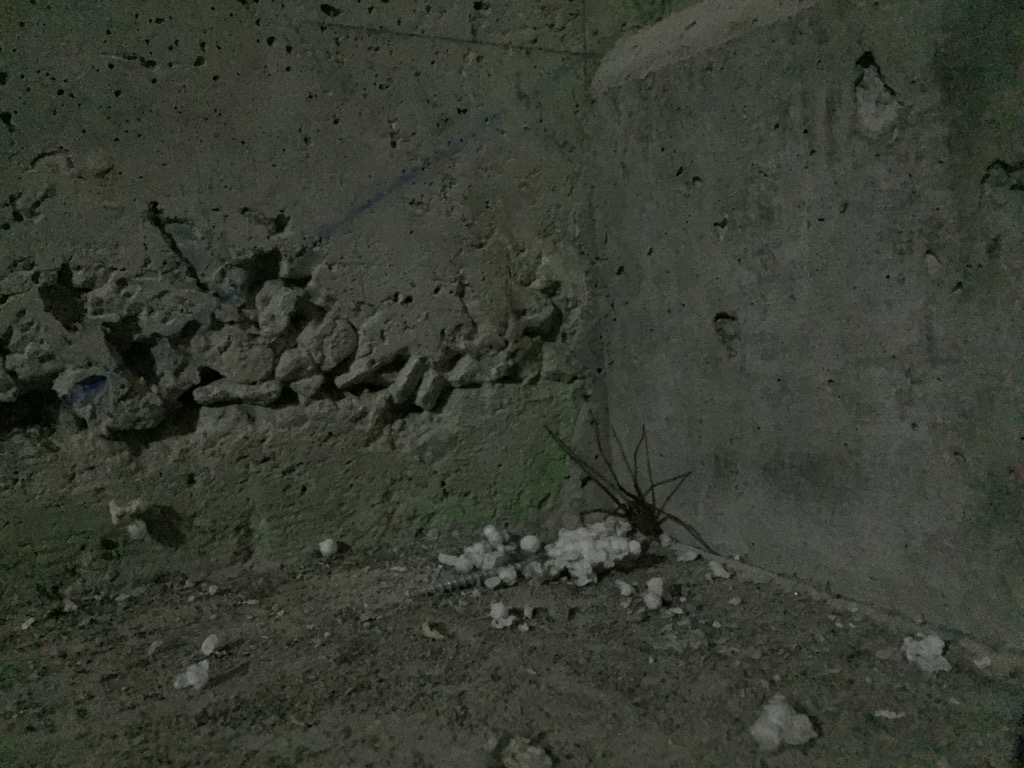
Pierre Huyghe, Living Cancer Variator, 2016. Animals; sensors; human cells; incubator; algorithm; hydraulic, thermic, electric circuits, sound. Courtesy the artist and Esther Schipper, Berlin.
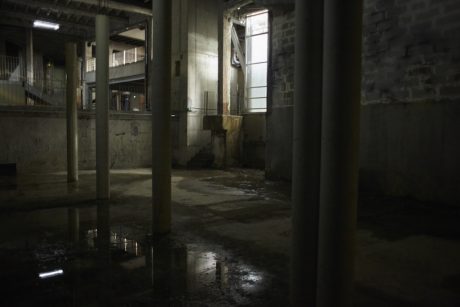
Pierre Huyghe, Living Cancer Variator, 2016. Animals; sensors; human cells; incubator; algorithm; hydraulic, thermic, electric circuits, sound. Courtesy the artist and Esther Schipper, Berlin.
If the procedure may seem a bit too complex and techno for its own good, Huyghe here uses the wherewithal of his ambition: working on ecosystems by dynamically and tangibly intensifying the forces present. Furthermore, this “materialist” approach, rooted in reality, calls to mind the influence of Gordon Matta-Clark who, in 1970, declared about Cherry Tree14: “I dug a hole in the cellar at 112 Green Street, I wanted it to be deep enough to reach the foundations in order to free, through that simple hole, the huge forces compressed and imprisoned in the building.”15 Huyghe pushes this dynamic and the effect of the variables to its entropic perspective by drawing the outlines of a biotope (the exhibition? the museum?) subject to disease and potential death—the unavoidable part of what is living. He thus offers us nothing less than a crisis project (in the medical sense of the term), whose romantic and prophetic aura conjures up the projections of the painter Hubert Robert onto a Louvre in ruins.
1 Allan Kaprow, Assemblages, Environnements & Happenings, New York, Abrahams, 1965.
2 Ibid.
3 Brian O’Doherty, White Cube, The Ideology of the Gallery Space, University of California Press, 1999, p. 76.
4 Ibid, p. 39.
5 Nicolas Bourriaud, Relational Aesthetics, Dijon, Les presses du réel, 2001, p. 9.
6 See also the publication resulting from this exhibition: Mathieu Copeland and Julie Pellegrin (eds.), Choreographing Exhibitions, Dijon, Les presses du réel, 2013. Let us also note that Mathieu Copeland has explored different exhibition formats giving pride of place to immateriality and time, such as “A Spoken Word Exhibition” (2009-2013), “An Exhibition to Hear Read” (2010) and “The Exhibition of a Film” (2015).
7 If the show at the Wiels spanned nine weeks, the project’s ensuing versions, like the one shown at the Centre Pompidou in Paris in 2016, lasted nine days and were re-written based on the spatial features peculiar to each venue.
8 As Philippe Parreno did in 2013, Tino Sehgal invited several artists, whose concerns and approaches are akin to his own, to join him for the occasion: Daniel Buren, James Coleman, Félix González-Torres, Pierre Huyghe, Isabel Lewis and Philippe Parreno.
9 Internationale situationniste, n°1, 1958, ARthème Fayard, p. 13.
10 The words of the exhibition curator Rebecca Lamarche-Vadel in Emmanuelle Lequeux, “Tino Sehgal, créateur d’échappées”, Le Monde, 10 October 2016.
11 See John Dewey, Art As Experience, 1934.
12 Frequently used in research laboratories, these cells come from a metastasic sampling carried out on Henrietta Lacks, suffering from cancer of the womb, who died in 1951. They form the first immortal cell line of human origin ever established.
13 In Insect Media published in 2010, Jussi Parrika describes a research trend which conceives of the media based on animals without brains, like insects. As models, these latter become a dynamic component acting, among other biological data, on the technical configuration of Huyghe’s project.
14 In 1971, Gordon Matta-Clark dug a hole in the basement at 112 Greene Street, in SoHo, Manhattan, in which he planted a cherry tree. The earth removed was left bare and infrared lights lit up the tree, to help it to grow. But it died after three months. The artist then produced Time Well, a kind of funereal rite, putting beneath the concrete, in place of the tree, a jar filled with fermented fruit and cherry stones.
15 Donald Wall, “Gordon Matta-Clark’s Building Dissections”, Arts Magazine, March 1976.
(Image on top: Allan Kaprow, Yard, 1961-2014. Installation view, «Allan Kaprow: Yard 1961-2015», Hepworth Wakefield, 2014. © Allan Kaprow Estate. Courtesy the Estate ; Hauser and Wirth. Photo : Gabriel Szabo, Guzelian.)
- From the issue: 80
- Share: ,
- By the same author: Some Frenchmen in New York, Alex Cecchetti, Pierre Paulin, Maxime Rossi,
Related articles
Paris noir
by Salomé Schlappi
Some white on the map
by Guillaume Gesvret
Toucher l’insensé
by Juliette Belleret




